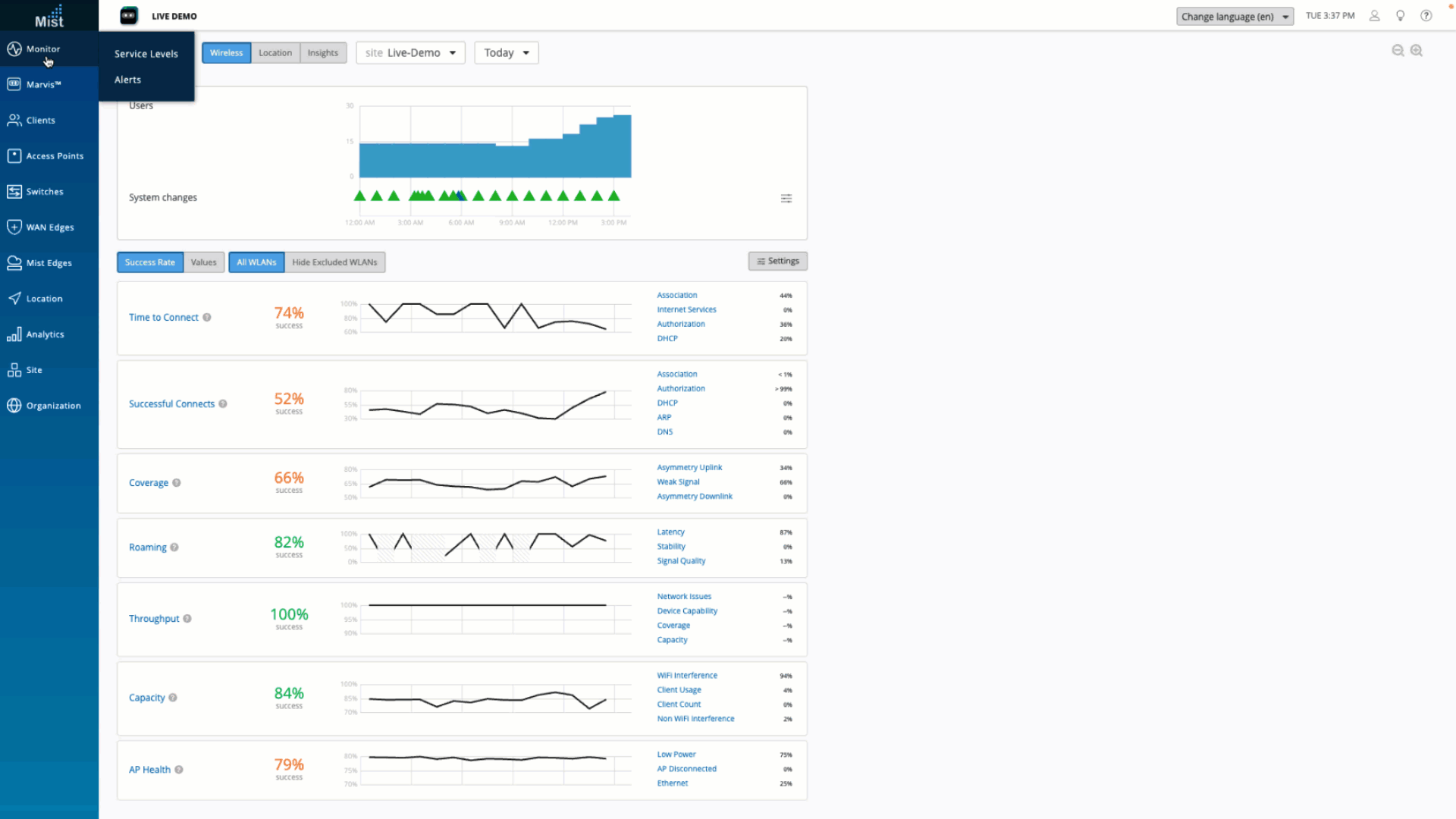- play_arrow Get Started
- play_arrow Access Points
- Overview of Juniper APs
- Juniper AP Ports and Their Usage
- PoE Requirements for Juniper APs
- play_arrow AP Dashboard
- play_arrow Onboarding
- play_arrow Configuration
- Auto-Provision Device Names, Sites, and Device Profiles
- BLE Settings
- Configure Ethernet Settings in a Device Profile
- Configure IP Settings
- Wireless Mesh Network Configuration
- Enable RTLS Support
- Electronic Shelf Labels
- Enabling LEDs on the AP
- Configure an AP for Survey Mode
- Configure Your APs as IEEE 802.1X Supplicants
- Enable Local Status Page
- Revert AP Configuration Automatically
- play_arrow Device Profiles
- Monitor and Manage Access Points
- Access Point FAQ
- play_arrow WLANs and WLAN Templates
- play_arrow Security
- Configure AP Threat Protection
- RSSI, Roaming, and Fast Roaming
- play_arrow RADIUS
- play_arrow Preshared Keys
- Rogue, Neighbor, and Honeypot Access Points
- play_arrow PCI DSS Compliance
- play_arrow WxLAN Access Policies
- Using WLAN Templates in a Device Profile
- Configure a WLAN Template
- Adding a WLAN
- WLAN Options
- Tips for Wi-Fi 6E (Video)
- Add a Bonjour Gateway to a WLAN
- Configure a Third-Party Tunnel
- Enable Geofencing
- Wi-Fi Data Rate Configuration
- DSCP Mapping
- WLAN Changes That Reset The Radio
- play_arrow Integrations
- play_arrow WLAN Guest Portal
- Compare WLAN Guest Portal Options
- Automatic Client VLAN Assignments
- play_arrow Custom Guest Portal
- Use an External Portal for Guest Access
- play_arrow Use an Identity Provider for Guest Access
- Authorize, Reauthorize, and Reconnect Guest Clients
- Troubleshoot a Guest Network That Doesn't Work
- FAQs: Guest Portal
- play_arrow Radio Management
- play_arrow Wireless SLEs
- play_arrow Technology Reference
Using SLEs for Troubleshooting
Learn how to use wireless SLEs to find the root cause of an issue and get details about scope, affected users, and more.
Service Level Expectations (SLEs) provide metrics that represent users' network experience. In addition, the SLEs are a powerful troubleshooting tool that you can use to drill-down to the root cause and fix the issue, not just the symptom.
The following figure shows how you can use SLEs and their classifiers (explained below) to troubleshoot an issue. This walk-through represents just one of the many ways you can use service levels and classifiers. The Juniper Mist portal provides dozens of different service level metrics and classifiers that you can use to investigate and understand your users' network experience.

In this example, each SLE block displays the success rate as a percentage. Take the Time to Connect SLE, for example. The 74% success rate means that 74% of the connection attempts were successful. The remaining 26% of the connection attempts did not succeed. On the right side of each SLE block, you see the percentage of unsuccessful attempts that were attributed to each classifier.
Click an SLE or classifier for additional troubleshooting details such as statistics, distribution, affected items, and so on.





















